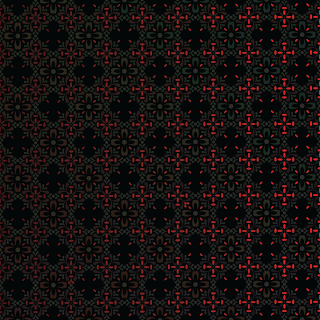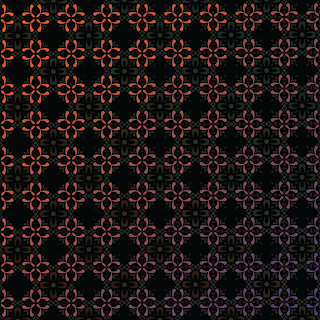I've done it. I've colored the pattern. And it's pretty spectacular.
To make this image, I used color sequences from Munsell's color space. This system accounts for changes to three main variables: hue (the color), value (the brightness of the color), and saturation (the amount of gray in the color).
I really want you to get the full impact of how beautiful this thing is to me, so let me walk you through the five main components:
This is a circular progression through Munsell color space, beginning at the bottom left and extending up to the top right. Note how all the colors represented are the same value and saturation, but all the hues are changing in the order that they would in a typical color wheel.
This is a diagonal progression through a single hue of Munsell color space, beginning at the top and extending downwards. A diagonal progression keeps the same value and hue throughout, but gradually adds more and more gray to the base hue.
These two progressions actually use a horizontal motion, but with different hues in each. A horizontal progression means that the color keeps the same hue and saturation, but gradually changes value. In the top example, the base hue is red on the right. Each step moving to the left is another step down in value. In the bottom example, the base hue is on the left and moving right with subsequent steps up in value.
Finally, from top left to bottom right, we have the diagonal cross-section sequence. This one gets a little more complex, because we have two variables shifting: hue and value, with the base hue (orange) moving both across the color space to it's compliment (blue-purple) and down in value. The result is a calming transition that avoids creating any of the chromatic gray shades that usually pop up when going from a hue to its compliment.
So knowing all that, join me once more in gawking at how these simple lines drawn through the visual spectrum can be woven together into a magnificently complex tapestry of color.








No comments:
Post a Comment